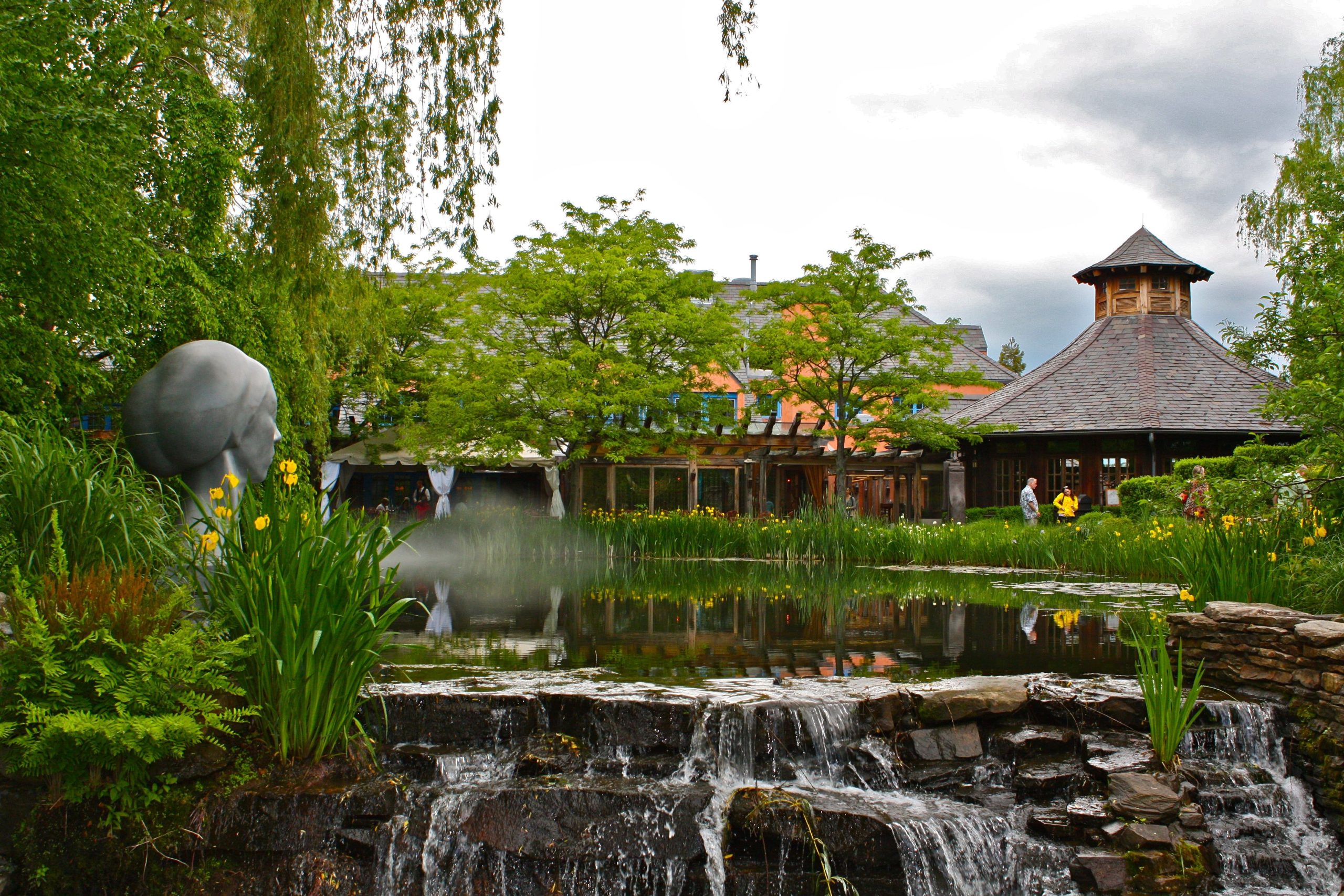“Nature is the best hardscape designer; our task is simply to unveil its hidden beauty and enhance it with our artistic touch.” – Anonymous
When it comes to creating breathtaking outdoor spaces, it’s not just about the lush greenery and vibrant blooms. Enter hardscape elements, the often overlooked but essential components of landscape design. From stunning pathways through a garden oasis to elegant retaining walls that shape the terrain, hardscape features are crucial in transforming an ordinary outdoor area into a captivating masterpiece. This article will explore the world of hardscape landscaping techniques and uncover how these structural elements pave the way to beauty, adding depth, functionality, and visual appeal to your outdoor haven. So, let’s dive in and discover the incredible importance of hardscape elements in creating truly remarkable and harmonious outdoor spaces.
What is Hardscape Landscaping?
Hardscape landscaping refers to incorporating non-living elements into outdoor spaces to enhance their functionality, aesthetics, and structure. These elements include stone, concrete, wood, and metal, which are used to construct pathways, patios, walls, decks, fences, pergolas, water features, and other architectural and decorative elements.
Hardscape landscaping serves multiple purposes in outdoor design. It creates defined spaces, provides stability and structure to the landscape, improves accessibility, and adds visual interest and focal points. Hardscape elements also offer opportunities for outdoor activities, such as seating areas, outdoor kitchens, fire pits, and entertainment zones.
Whether it’s a residential backyard, a public park, or a commercial plaza, hardscape landscaping plays a vital role in transforming outdoor areas into captivating, functional, and inviting spaces that cater to various activities and enhance the overall beauty and value of the property.
What are the Hardscape Techniques?
Hardscape techniques encompass a range of methods and approaches used to incorporate non-living elements into outdoor spaces. These techniques involve using various materials, construction methods, and design principles to create visually appealing and functional hardscape features. Here are some common hardscape techniques:
Paving and Pathways
This technique involves the construction of pathways, walkways, driveways, and patios using materials like concrete, stone pavers, brick, or gravel. It focuses on creating well-defined paths that guide movement throughout the landscape while adding texture and visual interest.
Retaining Walls and Terraces
These structures hold back soil and create level terraces on sloped landscapes. They use stone, timber, concrete blocks, or interlocking wall systems. Retaining walls provide stability, prevent erosion, and create opportunities for planting or seating areas.
Outdoor Structures and Features
This technique incorporates various structures and features into the landscape design. Examples include pergolas, gazebos, arbors, trellises, and fences, which provide architectural interest, shade, and privacy. Water features like fountains, ponds, waterfalls, and streams can add a soothing and captivating element to outdoor spaces.
Outdoor Seating and Entertainment Areas
Creating functional outdoor spaces for relaxation and entertainment is another hardscape technique. It involves the installation of seating walls, built-in benches, outdoor kitchens, fire pits, and outdoor lighting to enhance the ambiance and usability of the area.
Lighting and Accent
Lighting is an essential hardscape technique that adds ambiance, safety, and drama to outdoor spaces. Techniques like path lighting, accent lighting, uplighting, and downlighting can highlight key features, create focal points, and extend the usability of the space into the evening hours. Decorative accents such as sculptures, planters, and ornaments can enhance the overall aesthetic appeal.
These are just a few examples of hardscape techniques, and many more possibilities exist to explore. The choice of techniques will depend on the desired functionality, style, and overall vision for the outdoor space. By integrating these techniques, landscape designers can create visually stunning and functional environments seamlessly blend with the surrounding natural elements.
Planning and Designing Hardscape Landscapes
Planning and designing hardscape landscapes requires careful consideration and thoughtful decision-making. It’s a process that involves analyzing the outdoor space, setting goals, and envisioning the desired outcome. Here are some key steps to guide you in planning and designing your hardscape landscape:
Assess the outdoor space
Start by evaluating the existing landscape, taking note of its size, shape, topography, and any natural features or limitations. Consider factors such as sun exposure, drainage patterns, and existing vegetation. Understanding the unique characteristics of the space will help you make informed decisions during the design process.
Define your goals
Determine what you want to achieve with your hardscape landscape. Are you aiming for a functional outdoor entertaining area, a peaceful retreat, or a combination? Clarify your objectives and prioritize the features and elements that are most important to you. It will serve as a foundation for the design process.
Envision the desired outcome:
- Visualize how you want your hardscape landscape to look and feel.
- Consider the overall style, theme, and ambiance you wish to create.
- Collect inspiration from magazines, websites, or other landscapes that resonate with your vision.
It will help you communicate your ideas to professionals or guide your DIY efforts.
Consider functionality and flow
Consider how you want to use your outdoor space. Determine the activities and functions you want to accommodate, such as seating areas, cooking spaces, or recreational areas. Ensure that your design allows for smooth circulation and easy access to different areas. Strive for harmonious integration of hardscape and softscape elements.
Collaborate with professionals or DIY
Depending on the scale and complexity of your hardscape project, you may work with landscape architects, designers, or contractors. Their expertise can help translate your vision into a practical design and ensure proper construction. Alternatively, if you have the necessary skills and knowledge, you can embark on a DIY project while seeking guidance from reliable resources and tutorials.
Consider practical aspects
Consider practical considerations such as maintenance requirements, budget limitations, and local regulations. Research suitable materials, their durability, and long-term maintenance needs. Set a realistic budget and explore cost-effective options without compromising on quality.
Create a detailed plan
Develop a plan incorporating all the desired hardscape elements, including pathways, seating areas, structures, and lighting. Consider the elements’ proportions, scale, and balance to ensure a cohesive design. Pay attention to transitions and connections between hardscape and softscape areas, aiming for seamless integration.
Obtain necessary permits
If required, consult with local authorities or homeowner associations to determine if any permits or approvals are needed for your hardscape project. Comply with regulations to avoid any legal complications or delays.
Remember that hardscape design is a creative process that requires flexibility and adaptability. Be open to adjustments and modifications as you refine your plan. With careful planning and thoughtful design, you can create a hardscape landscape that enhances the beauty of your outdoor space, fulfills your functional needs, and reflects your personal style.
Transform your outdoor space into a stunning masterpiece with the power of hardscape landscaping. This technique seamlessly blends the non-living elements with nature, creating functional and visually appealing landscapes that cater to your needs and desires. From intricate paved pathways to great retaining walls, hardscape techniques provide structure, organization, and a sense of harmony. Careful planning and thoughtful designs ensure that each element serves a purpose, enhancing accessibility, defining spaces, adding beauty, and creating focal points. With the help of professionals or a DIY journey, unleash your creativity, envision your goals, consider practical aspects, and craft a detailed plan to pave the way to beauty in your outdoor oasis. Embrace the potential of hardscape landscaping and watch your outdoor space transform into a beautiful, functional haven that brings joy and inspiration for years.

